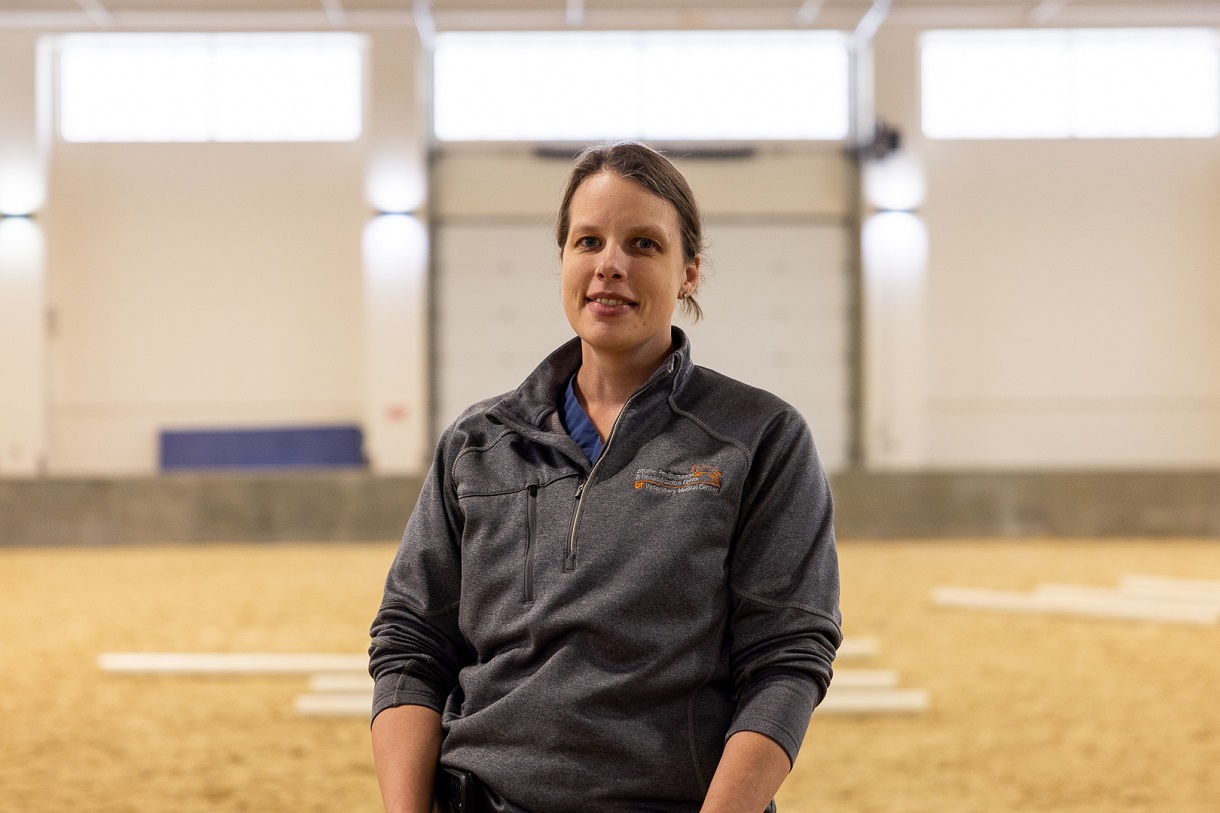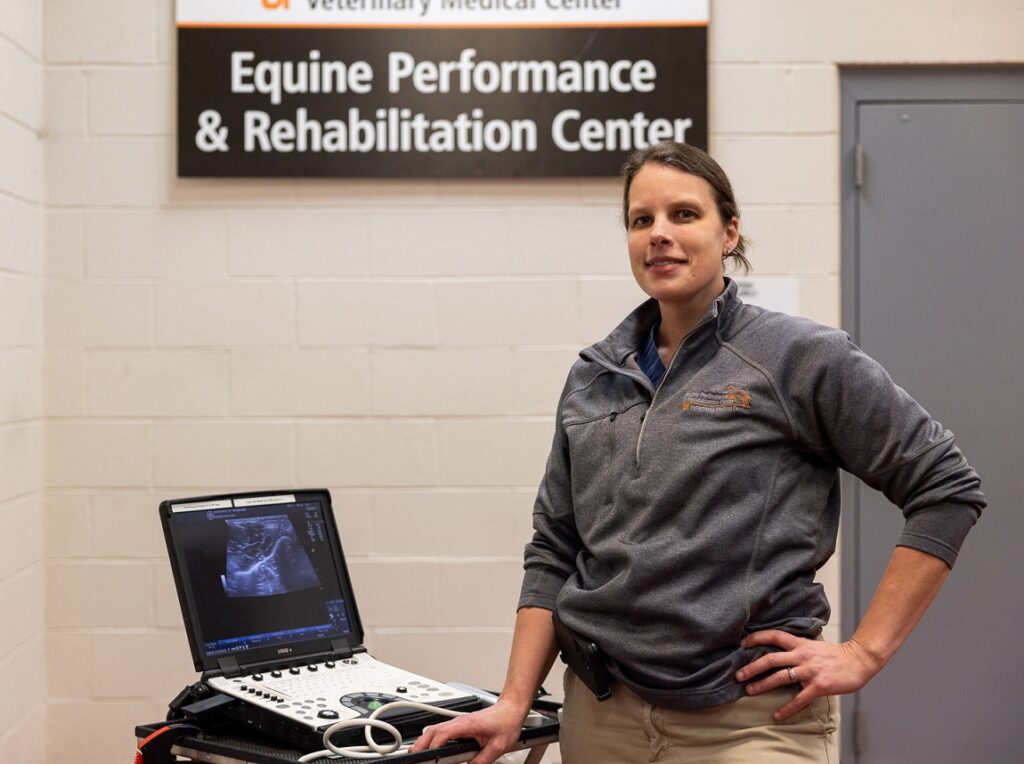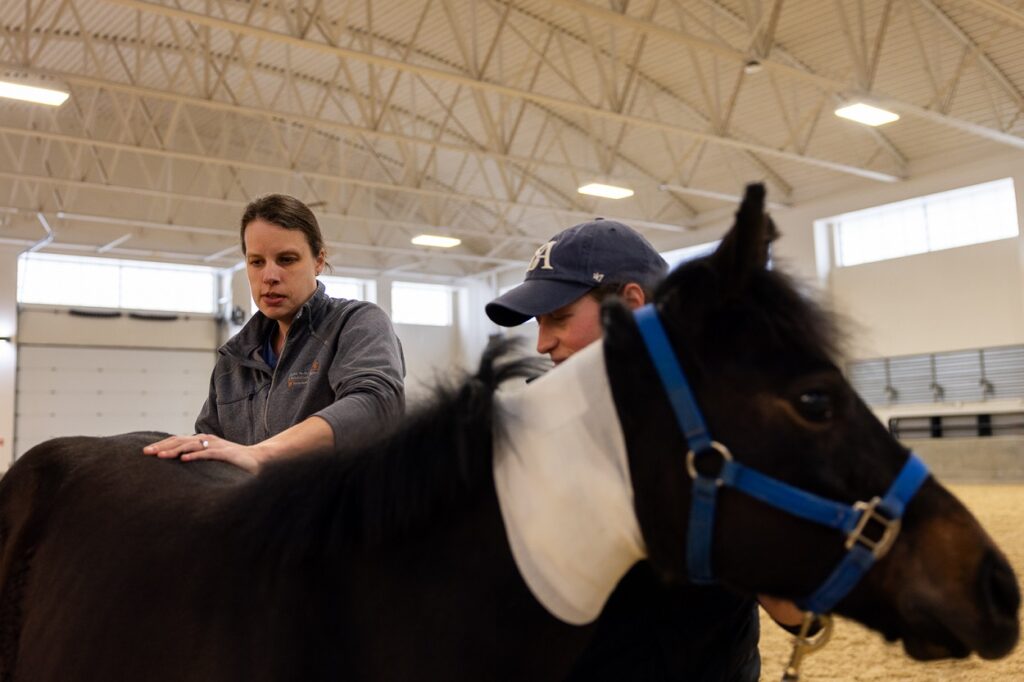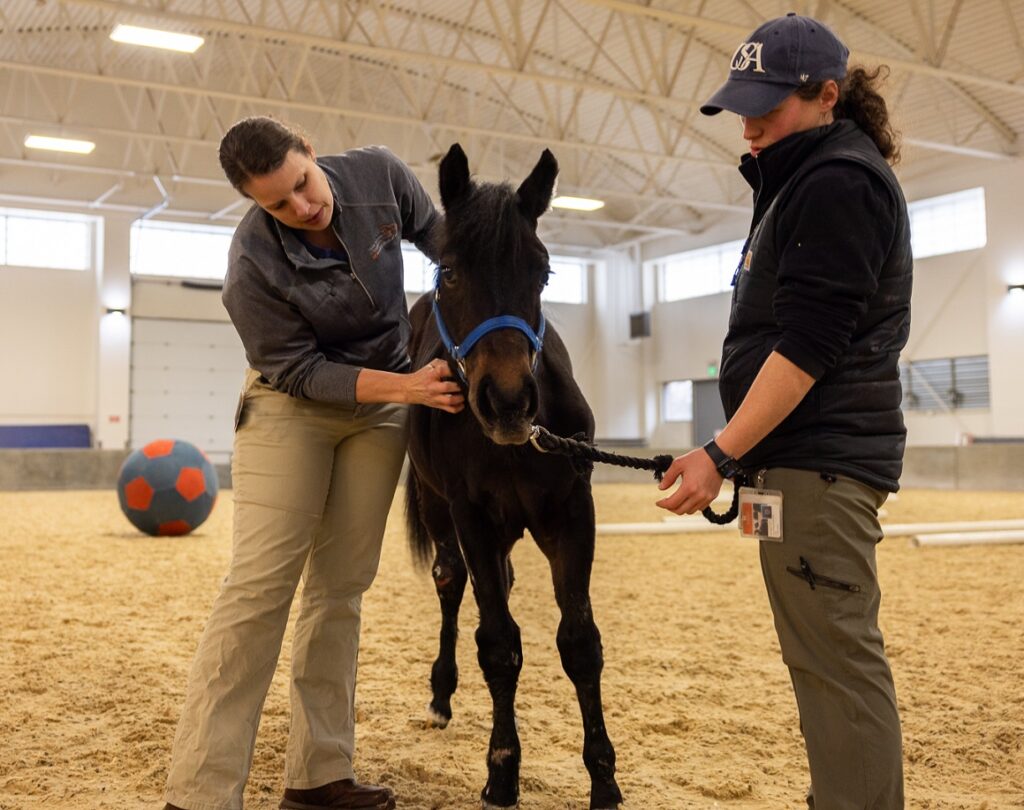
Clinical assistant professor empowers horses to reach peak performance through innovative rehabilitation at UTCVM
Where are you from, and how did your career lead you to the University of Tennessee College of Veterinary Medicine (UTCVM)?
I grew up on an 80-acre family-owned dairy and crop farm in southwest Michigan. I came to UTCVM for my residency training in 2015. I always wanted to get into rehabilitation, but I thought being a surgeon was the best way to feed my own cases. When the American College of Veterinary Sports Medicine and Rehabilitation became a specialty, I knew that’s what I wanted to do. UTCVM is one of the only veterinary colleges with a full-service equine rehabilitation facility. I knew I had to learn from the best to be the best, and I am thankful for Dr. Adair at UTCVM who gave me that opportunity.

Why did you decide to pursue a career in the field of equine health and rehabilitation?
I have always been interested in finding the best way to help animals return to their jobs. Healing the initial injury is just the beginning. Rehabilitation is really about getting the entire animal to be the best athlete they can be and preventing further injury.
What is your main research focus and how does it contribute to your field?
My main focus is characterizing Topline Dysfunction, previously just called “back pain” in horses. We are finding out more and more that the core of the horse is incredibly important for them to reach their full athletic potential and have long and happy careers with their owners.
What does an average day in the life look like for you?
After arriving to the hospital, we usually have meetings first thing in the morning. Then the students present each case to the group in morning stall side rounds. We discuss the daily concerns and plans for each patient and then come up with an overall plan for the day. In between in-patient treatments we usually have some outpatients to assess for lameness or poor performance. We also collaborate closely with the farrier and podiatry service, and we help with emergencies for laminitis or lacerations. I’m thankful to have a strong and dedicated team to be able to get everything accomplished on a daily basis.

What do you enjoy most about your job?
Each case is its own puzzle. Even if they have the same primary diagnosis, they all have different secondary problems or limitations. Finding that one piece of the puzzle that unlocks each horse and makes their personality shine through is exciting. For some horses, its managing chronic pain, for others its rebuilding strength and confidence in their own body. Customizing each individual rehabilitation plan will never get old.
Your premature foal patient, Seven, has gained quite a following online. What has it been like to care for him and share his journey with the public?
I’ve always done this job just to help each individual animal. Just because he’s famous, doesn’t make that any different. But he has allowed our team to show the world the power of rehabilitation and what we are capable of, even against all odds.

What kind of rehabilitation techniques have been most effective in helping Seven grow stronger?
Seven’s primary problems have been related to mobility and strength. Giving his joints the proper support, while also allowing him to move has been the key. Once all his joints were aligned, he could function much better and start building strength.
What has been the most rewarding part of working with Seven, and what do you hope his story teaches others about equine care?
Watching him grow and develop has been the most rewarding. He went from being a limp noodle who could barely sit up straight to getting up and down, bucking and playing in the arena. His transformation has been challenging at times, but it is incredibly rewarding to see him happy and sassy.

As a board-certified specialist in sports medicine and rehabilitation, what advice do you have for veterinarians, and future veterinarians, interested in this field?
Don’t be afraid to use your imagination. Much of what we do is trying to invent new exercises to stimulate a certain muscle group or joint motion for a specific horse. You don’t always need a lot of fancy equipment. Look around and see what might be already there. For example, a curb or railroad tie could be a great tool to increase joint flexion and proprioception when you ask the horse to step up and over. Or use the trees or bushes in your yard as a set of obstacles to weave around to promote bending and flexibility.
What do you like to do outside of work and/or what is a fun fact about yourself that your colleagues and students wouldn’t know?
Digging in the dirt is my happy place. I will never not be a farmer at heart. Despite living in the city, we have several fruit and vegetable gardens. I usually grow a ridiculous amount of tomatoes to make homemade chili, pasta sauce, and to just eat fresh. Nothing better than a sun-warmed red ripe strawberry!
